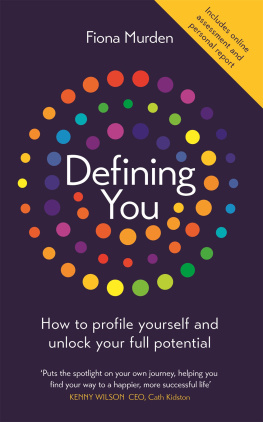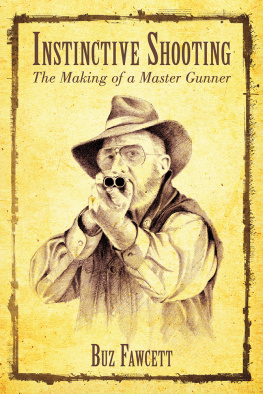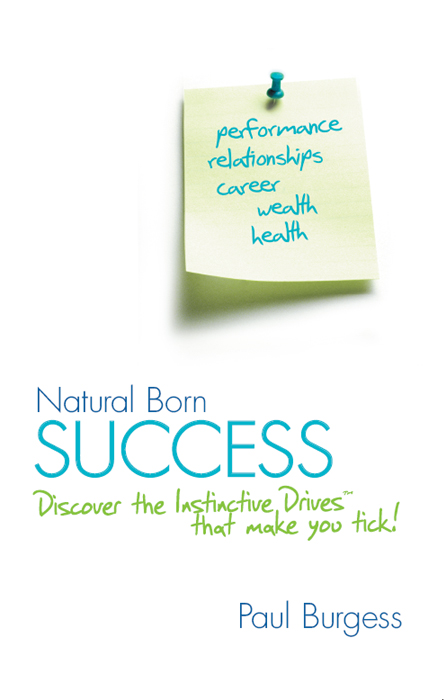Contents

First published 2007 by Wrightbooks
an imprint of John Wiley & Sons Australia, Ltd
42 McDougall Street, Milton, Qld 4064
Office also in Melbourne
Typeset in Berkeley LT 11.5/14.5pt
Paul Burgess 2007
The moral rights of the author have been asserted
Burgess, Paul.
Natural born success: discover the instinctive drives that make you tick.
Includes index.
ISBN 9780731405824 (pbk.).
ISBN 073140582X (pbk.).
1. Personality tests. 2. Motivation (Psychology) - Testing.
I. Title.
616.89075
All rights reserved. Except as permitted under the Australian Copyright Act 1968 (for example, a fair dealing for the purposes of study, research, criticism or review), no part of this book may be reproduced, stored in a retrieval system, communicated or transmitted in any form or by any means without prior written permission. All inquiries should be made to the publisher at the address above.
Story on pages 22 to 23 by Francie Baltazar-Schwartz
Pages 238 to 239 and 241 to 242 by Aron, A & Aron, EN, Statistics for Psychology, 1994, Pearson Education, Inc., Upper Saddle River, New Jersey
Cover image Photodisc
Back cover photograph Ken Holt. Reproduced with permission
Wiley Bicentennial Logo: Richard J Pacifico
Disclaimer
The material in this publication is of the nature of general comment only, and neither purports nor intends to be advice. Readers should not act on the basis of any matter in this publication without considering (and if appropriate taking) professional advice with due regard to their own particular circumstances. The author and publisher expressly disclaim all and any liability to any person, whether a purchaser of this publication or not, in respect of anything and of the consequences of anything done or omitted to be done by any such person in reliance, whether in whole or part, upon the whole or any part of the contents of this publication.
What people say about Natural Born Success and the I.D. System
[The I.D. System] has helped me re-craft my conversations with my team and peers, and it has helped me to become more self-aware of the impact of my style on others. Paul and I have recently discussed how to expand the use of I.D. to my wife and kids, with the goal of improving our communications as well ... So whether your team is a family, a self-managed work group, a couple, or like mine a business team, this book and the process it outlines can help you better understand who you are.
I particularly like the way Paul has written the book using real-life examples with real-life people in real work situations as well as personal situations. He cleverly takes his points from concept to explanation to examples so that the learning sticks for the reader and they can associate the learning with specific situations which embeds it in their thinking and application on a day-to-day basis.
Randy Pond
Senior Vice President
Operations, Processes & Systems
Cisco Systems Inc.
In my work with psychometric test research in the field of organisational behaviour, I have not seen anything get so quickly to the core of what makes someone tick. In my observation, when applying the I.D. System to students and industry participants, the I.D. helps people to really get to know each other. I see it as extremely useful as a tool and process that quickly helps you understand the core of the human being much deeper than any other aspect of personality or behaviour.
Anneke Fitzgerald (PhD)
Research Program Studies Coordinator
College of Business
University of Western Sydney (UWS)
As a leader, understanding my own I.D. and those of my team has freed up my time; we all now achieve much better outcomes because we know how to approach each other. As their boss, I now know how to work things through with them so they can do their job in way that also meets their needs the first time so there are now far fewer escalations back to me and better quality outcomes from them.
Jordan Hawke
Head of Retail Sales
Tower Australia Limited
When your team is running a hundred miles an hour its very easy for people to be focused on themselves, on their own goals, their issues and not be thinking as much about working effectively with others. Silos emerge and the lack of involvement and connection mean that people end up feeling what they dont understand. They make judgements about what people should or shouldnt do and how they should or shouldnt behave. In this context the I.D. has been a very valuable tool for me and my team.
One of the things that I particularly like is that there is no inherent value judgement about one I.D. being better than another so instead of people being preoccupied by what their profile says about them they are free to focus on other people and how to get on with them. It has helped each of us understand the connections at a business level as well as at a personal level. The improvements in the way my team relate to and reach out to each other has been palpable.
The I.D. has brought significant self-realisation to the team, which has broken down barriers, improved communication and has had a big impact on our productivity.
Jim Hassell
Managing Director, Australasia
Sun Microsystems, Inc.
Acknowledgements
I always knew I would write this book even though it has taken some fifteen years to complete and about thirteen years of false starts while I figured out a way to do it that would work for me. That way always has been and probably always will be for me to surround myself with outstanding people. To that end, Ive lived a very serendipitous life the right people just seem to show up.
The initial encouragement and belief provided by Marg Bentley and Lyn Burgess was invaluable to me as was their support and active involvement during the ensuing years in which the I.D. System was brought to life. It really was a team effort.
To the many staff members and consultants who have worked with me since then, you have all been pioneers and I know youve felt the pain of that at times, just as much as you have also revelled in helping get something so exciting off the ground. In particular, I want to thank Don MacDonald, who has been with me since day one and whose support has never flinched. Gail Freeman and Al Ramos have also been there for virtually the whole journey sharing all the triumphs and tribulations so thank you.
What a gift Tracy Kennedy has been to me! What started as a four-month, international work-experience stint continued for four years with Tracy quickly becoming my right-hand person. She was the first to facilitate our training programs and gain the I.D. black belt thereby giving everybody else the confidence that they could do it too. You helped build much of what we have today, Tracy. To Tracys mother, Linda, thank you for steering your daughter in my direction and for your support and friendship through many tough years.
How do I acknowledge the extensive contribution of Greg Meyer? The tools and resources available now for people to not only understand their I.D. , but also to use it have much to do with your passion and unique skill. You have protected me and I.D. in so many ways, but most importantly you have relentlessly ensured we are congruent to our vision. You also introduced Anneke Fitzgerald to the I.D. System .
Anneke Fitzgerald (PhD) and her research team at the University of Western Sydney have also made a unique contribution. Their research has added that vital academic credibility piece that was missing for so long, and your faith in me and your passion for my vision has meant just as much.











